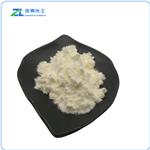Chemical Properties
White to almost white powder
Uses
Sodium trichloroacetate with trichloroacetic acid (TCA) undergoes rapid decarboxylation in dimethylformamide (DMF) in the presence of aldehydes to form nucleophilic trichloromethyl anion, which then adds to the aldehydes to form trichloromethyl carbinols. It can also undergo thermal decarboxylation in aprotonic solvents in the presence of olefins to generate dichlorocarbene as an intermediate.
Uses
As a decalcifier and fixative in microscopy; also as a precipitant of protein. As herbicide.
Uses
Sodium trichloroacetate, is used in acid binding reagent in the textile industry in the dying process. Sodium trichloroacetate has been reported previously to be an effective denaturation reagent for proteins was applied to poly(l-lysine) and poly(l-glutamic acid) to see its effects on a coil-to-helix transition and on the chemical reactivities of the ε-amino group of poly(l-lysine). Addition of sodium trichloroacetate to poly-(l-lysine) induced a helical conformation even at neutral pH where the ε-amino group of the polymer was protonated.
Definition
ChEBI: TCA-sodium is an organic molecular entity.
Hazard
Toxic by ingestion, irritant to skin and eyes.
Flammability and Explosibility
Non flammable
Safety Profile
Moderately toxic by ingestion andintravenous routes. Human mutation data reported. Largedoses cause central nervous system depression. Used as anherbicide. Bags of the salt can ignite spontaneously instorage. When heated to decomposition it emits very




